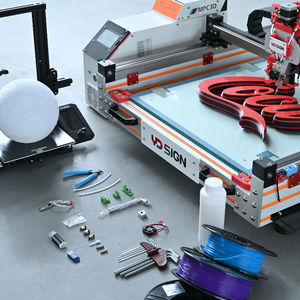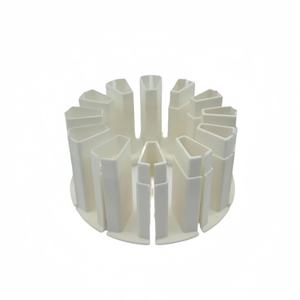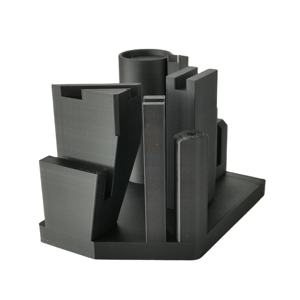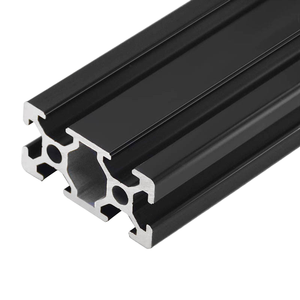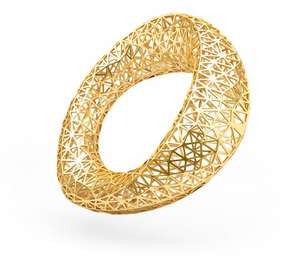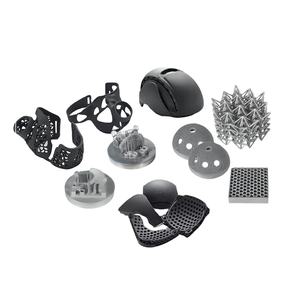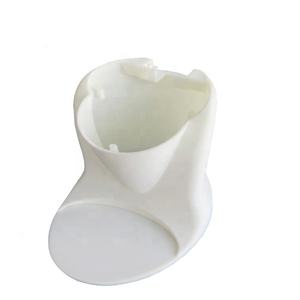Discover a professional 3D printing powder supplier
PRODUCT PARAMETERS
Description
Overview of SLA SLS 3D printing sever plastic Parts rapid prototyping industrial product
3D printing, also known as additive manufacturing, is a transformative technology that allows the creation of three-dimensional objects by depositing materials layer by layer based on digital designs. This process opens up a new world of possibilities in product design, customization, and production, revolutionizing various industries including healthcare, aerospace, automotive, consumer goods, and more.
Customization & Personalization: One of the key advantages of 3D printing is its ability to create highly customized products tailored to individual needs or preferences, from prosthetics to fashion accessories.
Complex Geometry: 3D printing excels at producing intricate shapes and geometries that would be extremely challenging or impossible to manufacture using conventional methods, such as internal lattice structures or organic forms.
Rapid Prototyping: It significantly speeds up the product development cycle by enabling designers and engineers to quickly produce physical prototypes for testing and refinement.
On-Demand Manufacturing: The technology supports small-batch or even one-off production runs economically, reducing the need for large inventories and allowing for just-in-time manufacturing.
Material Diversity: A wide range of materials can be used in 3D printing, including plastics, metals, ceramics, composites, and even biomaterials, each offering unique properties for specific applications.
Reduced Waste: As compared to subtractive manufacturing techniques, 3D printing only adds material where needed, leading to less waste and a more sustainable manufacturing process.
Features of SLA SLS 3D printing sever plastic Parts rapid prototyping industrial product
Design Flexibility: The technology enables the realization of complex designs without the constraints of traditional manufacturing tools and molds.
Functional Integration: Parts can be designed with integrated features such as channels, cavities, or interlocking components, which can enhance functionality or simplify assembly.
Lightweight Structures: Advanced 3D printing techniques allow for the creation of lightweight yet strong structures through optimized designs and the use of lattice structures or composite materials.
Improved Performance: By precisely controlling material composition and structure, 3D printed parts can exhibit enhanced mechanical, thermal, or electrical properties.
Cost-Efficiency for Complexity: While 3D printing may not always compete with mass-production methods for simple parts, it becomes increasingly cost-effective as the complexity of the part increases.
Innovative Applications: From medical implants that match a patient’s anatomy perfectly to aerospace components that reduce weight and increase efficiency, 3D printing pushes the boundaries of what’s possible in product design and engineering.

(SLA SLS 3D printing sever plastic Parts rapid prototyping industrial product)
Specification of SLA SLS 3D printing sever plastic Parts rapid prototyping industrial product
SLA and SLS 3D printing develop solid plastic components quick. These techniques are excellent for fast prototyping. They let you check designs rapidly. SLA utilizes a laser to harden liquid plastic layer by layer. SLS uses a laser to fuse powdered plastic bits together. Both construct parts directly from 3D CAD files.
Run-down neighborhood components supply very smooth surface areas. They catch fine information well. This makes SLA wonderful for aesthetic versions. It’s good for models requiring a polished look. Usual run-down neighborhood products are clear or tinted materials. These resins imitate standard plastics. Some tough materials manage more stress. SLA components can be breakable in some cases. They may warp if slim. Post-processing involves washing off liquid material. After that the components require UV light to treat completely. Assistance frameworks are required. Eliminating them leaves marks needing sanding.
SLS parts are normally solid and long lasting. The unfused powder sustains the component throughout printing. This means complicated forms are possible without extra supports. SLS components have a somewhat grainy surface coating. They feel like fine sandpaper. This coating is usually acceptable for useful testing. Popular SLS product is nylon powder. Nylon is difficult and adaptable. It takes care of warm better than several SLA materials. SLS components are good for components that break together. They work for parts under mechanical load. Post-processing mainly includes cleansing off loosened powder. The powder can be reused primarily.
Select SLA for high-detail models requiring a smooth coating. Pick SLS for challenging, functional parts requiring great strength. Both approaches deliver components quicker than conventional machining. They cost much less for short runs. They assist locate style problems early. This saves money and time later on.
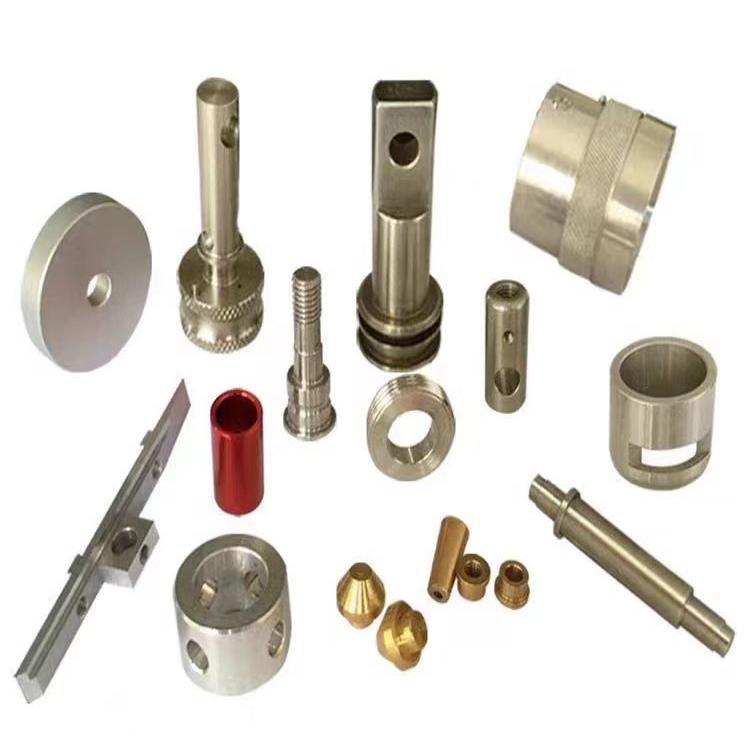
(SLA SLS 3D printing sever plastic Parts rapid prototyping industrial product)
Applications of SLA SLS 3D printing sever plastic Parts rapid prototyping industrial product
RUN-DOWN NEIGHBORHOOD and SLS 3D printing create solid plastic parts fast. Developers and designers use them greatly for fast prototyping. These approaches build things layer by layer straight from electronic layouts. SLA uses a laser to set fluid resin. SLS makes use of a laser to fuse fine plastic powder fragments, generally nylon.
These modern technologies supply huge speed advantages. Prototypes that took weeks currently obtain made in days. Developers can evaluate ideas promptly. They make adjustments quick. Printers work overnight. Groups get physical versions the next early morning. This fast turnaround accelerate product growth cycles.
The parts function well for useful screening. SLS parts are difficult. They manage tension and warm like final production plastics. Engineers test equipments, clips, and real estates under actual conditions. SLA parts have really smooth surface areas. They are good for visual versions and in shape checks. Developers see just how parts look and fit together early.
Product selections issue. SLS primarily makes use of nylon powders. These make sturdy, versatile components. SLA utilizes different resins. These materials can be stiff, bendy, clear, or imitate ABS plastic. Both techniques sustain complex shapes. Interior channels, thin wall surfaces, and elaborate information publish easily. Standard approaches fight with these features.
Beyond prototypes, these prints serve actual usages. Factories utilize them for customized jigs and fixtures. Clinical labs make specialized tools. Low-volume end-use components are possible. SLS parts are particularly helpful for this. They are solid sufficient for several applications.
Company Profile
3D Printing Passion is a trusted global chemical material supplier & manufacturer with over 12-year-experience in providing super high-quality 3D printing powder and relative products.
The company has a professional technical department and Quality Supervision Department, a well-equipped laboratory, and equipped with advanced testing equipment and after-sales customer service center.
If you are looking for high-quality 3D printing materials and relative products, please feel free to contact us or click on the needed products to send an inquiry.
Payment Methods
L/C, T/T, Western Union, Paypal, Credit Card etc.
Shipment
It could be shipped by sea, by air, or by reveal ASAP as soon as repayment receipt.
5 FAQs of SLA SLS 3D printing sever plastic Parts rapid prototyping industrial product
What materials work best for SLA/SLS parts?
SLA mainly uses liquid resins. Resins offer very smooth surfaces and fine details. SLS uses powdered plastics like nylon (PA12). Nylon is strong and handles heat well. Choose resin for looks. Choose nylon for toughness.
How strong are SLA and SLS plastic parts?
SLS parts are generally stronger. Nylon powder creates durable parts good for functional testing. SLA resin parts look precise but are often more brittle. They suit visual models better. SLS parts handle stress better.
Why is SLS sometimes cheaper than SLA for multiple parts?
SLS prints many parts stacked inside its powder bed. The machine uses powder efficiently. Printing more parts doesn’t take much extra time or powder. SLA prints one layer at a time per part. More parts mean longer print times and more resin.
How smooth is the surface finish?
SLA gives the smoothest finish. The liquid resin cures layer by layer precisely. SLS parts feel slightly grainy. Loose powder sticks to the part surface during printing. SLS parts need extra finishing for a smooth feel.
What are SLA and SLS best used for?
Use SLA for detailed models needing a perfect surface. Examples include visual prototypes, molds, and clear lenses. Use SLS for tough, functional parts needing strength. Examples include housings, hinges, and complex assemblies. SLS parts work well for end-use products too.

(SLA SLS 3D printing sever plastic Parts rapid prototyping industrial product)

